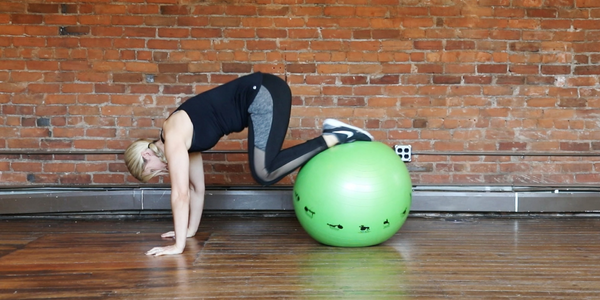As we gracefully age, maintaining balance and strength becomes increasingly crucial for our overall well-being. The journey of life is a beautiful one, but it can come with its own set of challenges as we grow older. However, fear not, for there are ways to stay vibrant and active by adding balance exercises well into our golden years.
In this article, we delve into the realm of balance exercises for aging adults with simple exercises that not only enhance physical stability but also nourish the spirit. So grab your yoga mat and resistance bands, because we’re about to embark on a journey towards greater vitality and resilience!
As we age, our bodies naturally become less strong and more susceptible to injury, especially fall injuries. To combat this, it is important to maintain balance and strength exercises. Incorporating balance and strength exercises as older individuals will help maintain a healthy body, independence, and overall quality of life!
Strength training helps you build muscle and can help improve your ability to resist gravity and move around easily.
Balance training, on the other hand, helps keep your muscles flexible and prevents injuries from happening in the first place.
Balance and strength training exercise improves your stability and coordination, helps your body function properly, and allows you to live a more independent and active life as you age.
Please Note: We are not physicians. If you have loss of balance or balance problems, we recommend you seek professional medical advice from your regular healthcare provider. Poor balance can also be related to other health conditions that need medical care. This article is for informational purposes only and intended to guide you with balance and strength exercises. If you are working with a physical therapist, please continue with your prescribed program and don’t add any additional exercises without consulting them.
Why Seniors Should Perform Balance Exercises
Are you struggling with poor balance? Feeling like you’re sense of balance is always off-kilter, no matter what you do? You’re not alone. Millions of older adults suffer from poor body balance. But there is good news: There are ways to improve your balance and feel more centered and stable.
Balance is something most of us do without conscious thought, but having good balance allows us to do nearly every activity more easily and effectively
We know that maintaining your independence in daily life is important. Activities like climbing stairs or putting away groceries can be done more easily when your body’s core muscles are stronger.
A new exercise program may not be on your list of things to do but following a simple balance exercise routine won’t take much time and your body will thank you in the long run.
Research shows that balance plays a significant role in a person’s quality of life as they age, especially when it comes to reducing the risk of injury or death due to falls.
The goal of balance training is to improve stability and coordination throughout our bodies.
Balance training typically involves exercises that strengthen the muscles that keep us upright, including our legs and core.
Balance exercises are often slow, methodical movements ranging from standing on one foot to a complicated yoga pose. Anything that challenges our center of gravity will improve our balance.
Improved Strength with Resistance Training
The human body is capable of incredible feats, but only with the right training. Improving your strength with resistance training can help you achieve your fitness goals and improve your overall health. Strength or resistance training programs vary in their approach, but all have the same goal: to make the body stronger and more resistant to injury.
Muscle strength can predict how healthy we’ll be as we age and how long we’ll be active and independent.
After middle age, we can lose three to five percent of our muscle mass per decade. Muscle loss affects our ability to perform everyday activities and increases the risk of injury or death due to falls.
Strength training—or resistance training—involves exercises that use our own body weight or equipment such as weights or Smart Strength Bands to build muscle. Learn about the benefits of strength bands over weights here!
Strength training is essential for improving stability and coordination, and increases bone density, organ function, immunity, and metabolism.
According to the CDC, about 1 in 4 adults in the United States has low bone density, which increases their risk of fractures. But there’s more good news! According to the Mayo Clinic, you can strength train for two to three times a week for only 20 to 30 minutes and see significant strength improvement!
While you can gain strength from a single session, experts recommend doing strength training multiple times per week. Building muscle mass and strengthening bones are both essential for overall health and wellness, but it’s important to start slowly and the number of repetitions should depend on each individual and may change from day to day. Be responsive to your body.

Strength Training Exercises:
Incorporating these exercises into a regular routine can help improve strength, balance, and overall health for aging individuals.
1. Squats (Bodyweight)
Purpose: Strengthen the legs and glutes.
Steps:
- Stand with your feet shoulder-width apart and toes pointing slightly outward.
- Extend your arms straight in front of you for balance.
- Slowly bend your knees and lower your hips as if you’re sitting in a chair. Keep your chest up and your back straight.
- Lower yourself until your thighs are parallel to the floor or as low as comfortable.
- Push through your heels to stand back up to the starting position.
- Repeat for 6-8 repetitions.
Tips: Keep your knees aligned with your toes and avoid letting them cave inward. If needed, use a chair behind you for additional support and safety.
2. Wall Push-Ups (Bodyweight)
Purpose: Strengthen the chest, shoulders, and triceps.
Steps:
- Stand facing a wall, about arm’s length away.
- Place your hands on the wall at shoulder height and shoulder-width apart.
- Keeping your body straight, bend your elbows and lean towards the wall until your nose is almost touching it.
- Push back to the starting position by straightening your arms.
- Repeat for 8-10 repetitions.
Tips: Keep your core engaged and avoid arching your back. If the wall is too easy, but the floor is too challenging, try using the kitchen counter!

3. Seated Band Rows (Strength Band)
Purpose: Strengthen the back, shoulders, and biceps.
Steps:
- Sit on a sturdy chair with your feet flat on the floor.
- Place the center of the strength band under your feet and hold the ends with both hands.
- Sit up straight and pull the bands towards your waist, squeezing your shoulder blades together.
- Slowly return to the starting position.
- Repeat for 10-15 repetitions.
Tips: Keep your back straight and avoid leaning forward or backward during the movement.
4. Band-Assisted Side Leg Raises (Strength Band)
Purpose: Strengthen the hips and outer thighs.
Steps:
- Stand next to a sturdy chair or wall for support.
- Place the strength band around your ankles.
- Holding the chair or wall for balance, lift your right leg out to the side as far as comfortable.
- Slowly return your leg to the starting position.
- Repeat for 10-15 repetitions, then switch to the left leg.
Tips: Keep your torso upright and avoid leaning to the side. Perform the movement slowly to maximize muscle engagement.
General Tips for Balance Exercise for Seniors
- Warm-Up: Always start with a 5-10 minute warm-up, such as walking or marching in place, to get your muscles ready.
- Breathing: Remember to breathe naturally. Exhale during the exertion phase (e.g., pushing up) and inhale during the relaxation phase (e.g., lowering down).
- Safety: Perform each exercise slowly and with control to avoid injury. If you experience any pain, stop immediately.
- Progression: Start with fewer repetitions and gradually increase as you build strength and confidence.
Balance and Strength Training for Aging Adults is a Must
Balance and strength exercises are a great way for aging adults to keep moving. Finding a routine that suits your body is essential. They can improve balance, reduce the risk of falls, and increase strength. These exercises are also safe and can be done in a variety of ways to fit each individual’s needs and abilities.
Incorporating balance and strength exercises into a daily routine can significantly improve overall health and quality of life for seniors. By focusing on exercises that target core stability, leg strength, and flexibility, seniors can reduce the risk of falls and maintain independence. It is important to start slowly and gradually increase intensity to avoid injury while reaping the benefits of improved balance and muscle strength.
With consistency and dedication, seniors can experience increased energy levels, better posture, and enhanced mobility as they age. Take the first step towards a healthier future by incorporating these exercises into your daily routine today!







